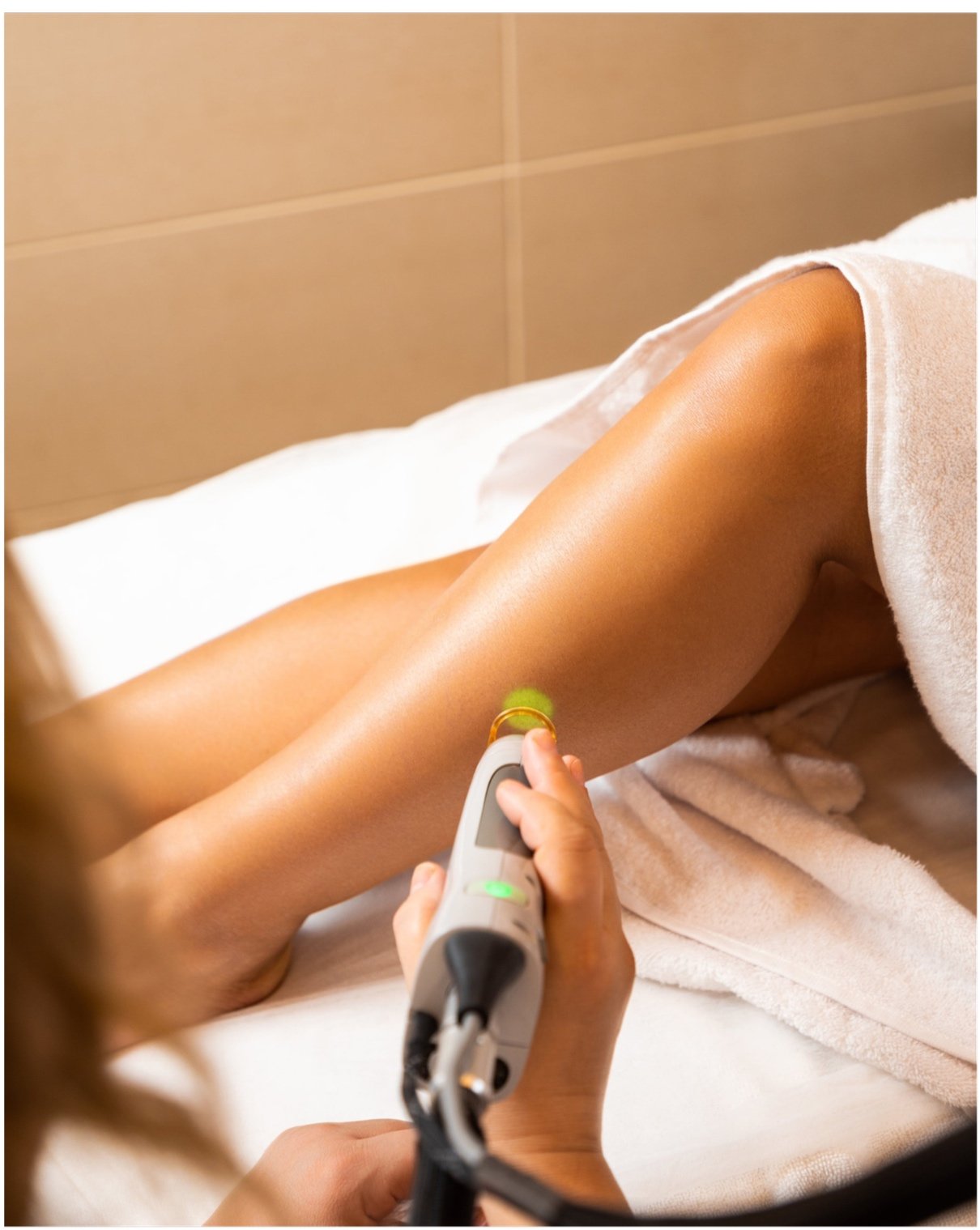
Laser Hair Removal
WHAT IS LASER HAIR REMOVAL AND HOW DOES IT WORK?
The laser specifically targets melanin within the hair shaft. As the melanin absorbs the laser energy, it converts into heat, which is directed at the hair follicle. This heat damages the follicle, reducing its ability to grow new hair. In the weeks following treatment, the affected hair may shed as it's pushed out of the damaged follicle. Multiple sessions are necessary to effectively treat hairs in different stages of the growth cycle and ensure long-lasting results.
Expected time in office: 15 - 60 minutes
Laser Hair Removal Appointment Process: A Simple Overview
Expert Assessment: A detailed assessment of skin type, hair colour and medical history.
Preparation: Before your appointment, please ensure treatment areas are clean and shaved. Avoid using tanning lotions and refrain from having freshly tanned skin. Eye protection is provided during the procedure.
Treatment: Laser settings are customized based on your skin type and hair thickness and ultrasound gel is applied to the treatment area to enhance comfort and protect the skin.
Post-Treatment: Mild redness may occur in the treated area, a soothing aloe vera gel is applied to enhance comfort and detailed aftercare instructions are provided to support the healing process
Follow Up: Laser hair removal requires multiple sessions to effectively target hairs in various growth stages and achieve optimal results. Treatments are typically spaced several weeks apart for the best outcome.
WHAT TO EXPECT DURING YOUR APPOINTMENT:
Frequently asked questions about Laser Hair Removal:
-
Laser hair removal is a cosmetic procedure that uses concentrated beams of light to target and eliminate unwanted hair. The technology involves the absorption of light by the pigment in the hair follicles, which then destroys the follicle and inhibits future hair growth.
-
The laser device emits concentrated light that targets the pigment in hair follicles. The light energy is absorbed by the pigment, which damages the follicles and inhibits future hair growth. Depending on the size of the area being treated, the procedure can take anywhere from a few minutes to an hour.
-
Results typically start to appear after just one session and will notice fewer, thinner, lighter, slower re-growth of hairs. The effectiveness of laser hair removal can vary depending on individual factors such as hair type and skin tone. Multiple sessions are necessary to achieve optimal results. It's important to follow post-treatment care to enhance and maintain the benefits of the procedure.
-
The sensation experienced during the procedure can vary from person to person. Most patients describe the feeling as similar to a rubber band snapping against the skin. While there may be some discomfort during laser hair removal, it is often described as tolerable and short-lived. After the session, some clients may experience mild redness or swelling, similar to a sunburn, but this typically subsides within a few hours
-
Laser hair removal is generally safe but can have mild and temporary side effects, such as temporary redness, swelling, or irritation, akin to a mild sunburn. The risk of skin pigmentation changes are very low as the procedure is carried out by our experienced professionals and use the latest, advanced, medical-grade technology that is safe for darker skin tones.
-
Laser hair removal can be a permanent solution for unwanted hair. Generally, clients experience fewer, thinner, lighter, slower re-growth of hairs, temporary hair loss or permanent hair reduction. However, it is important to understand that while laser hair removal significantly reduces hair growth, it may not guarantee complete permanence for everyone.
-
After laser hair removal, following post-treatment instructions is vital for skin health. Avoid direct sun exposure and tanning beds for at least two weeks to prevent hyperpigmentation. Refrain from hot baths, saunas, and intense workouts for 24-48 hours to reduce skin irritation. Moisturize the treated area but avoid harsh products and exfoliants for a few days. Use a high SPF sunscreen on exposed skin. If unusual discomfort, redness, or swelling occurs, consult your practitioner. Adhering to these guidelines ensures better recovery and results.


